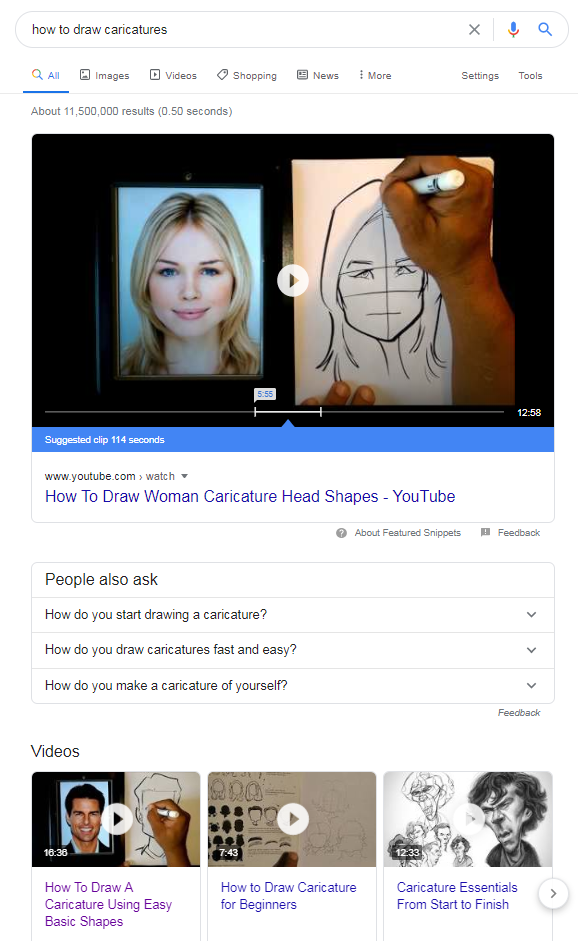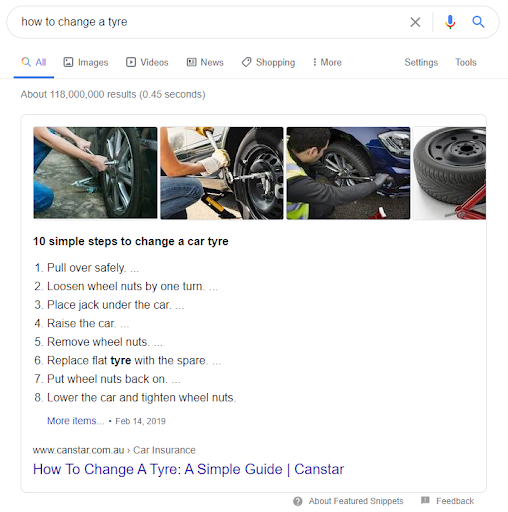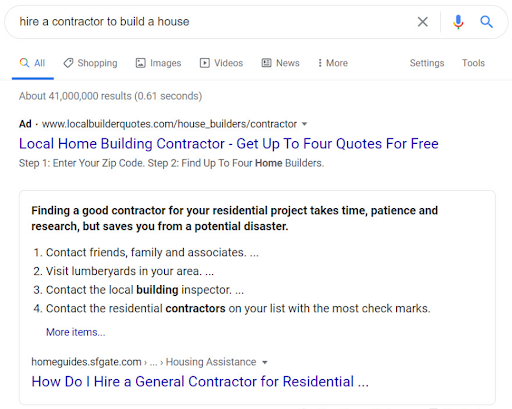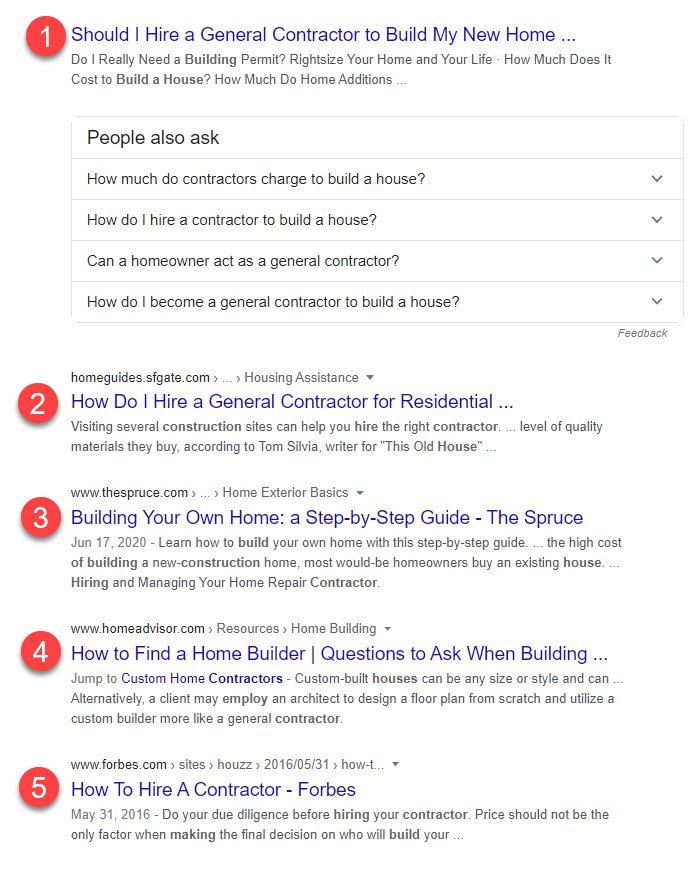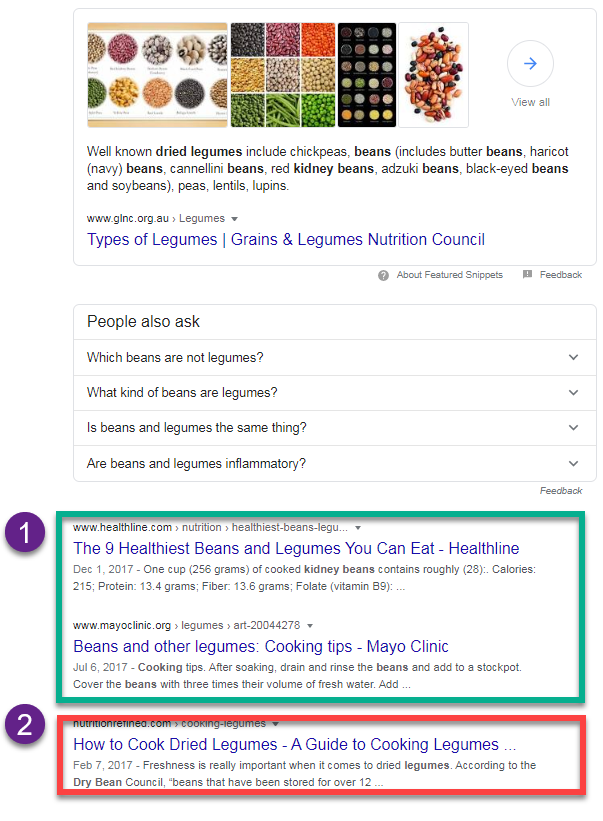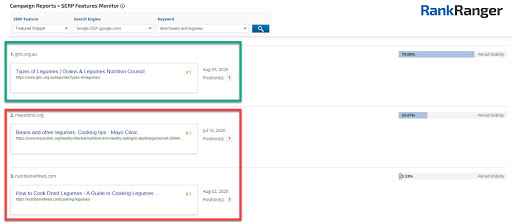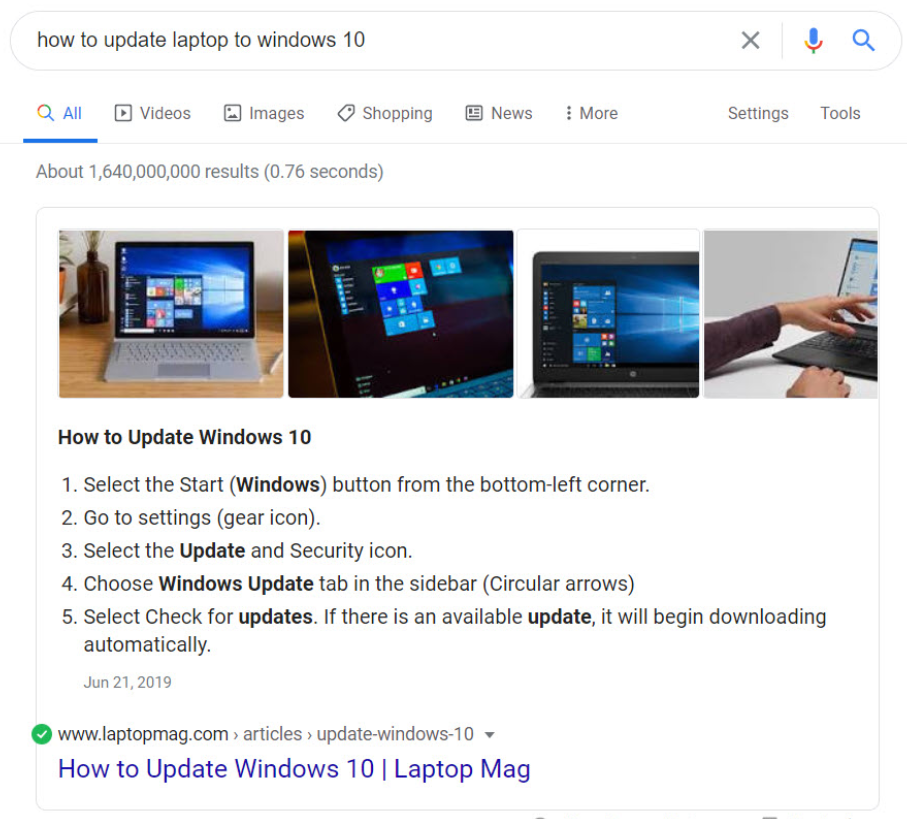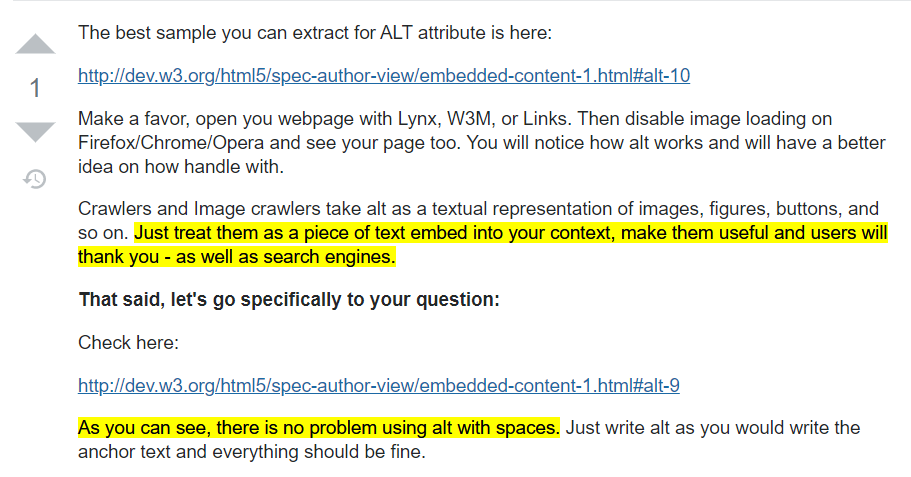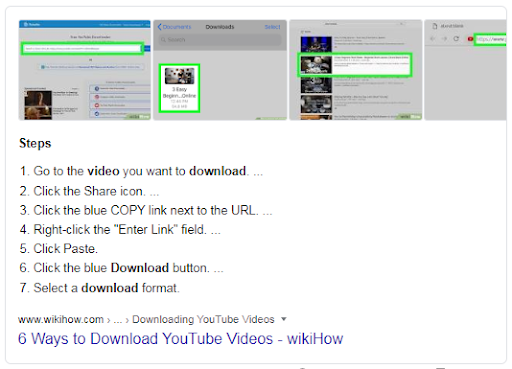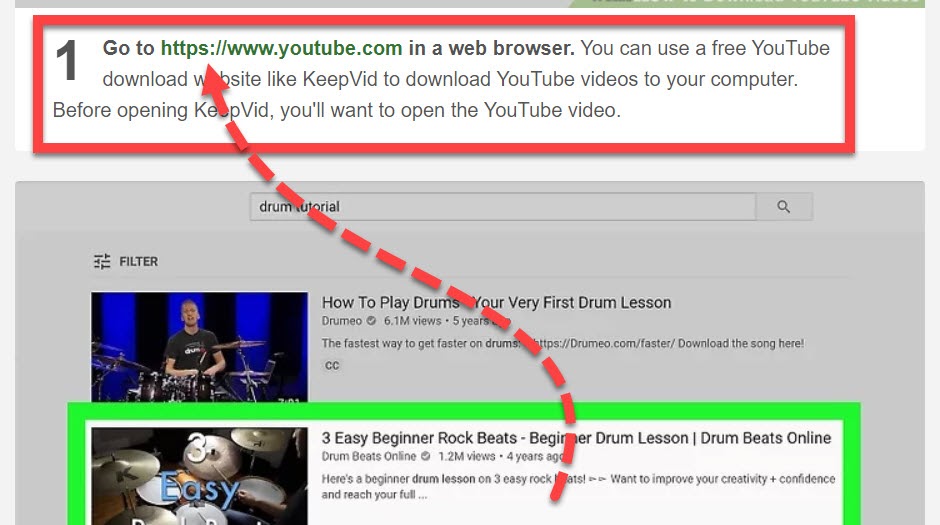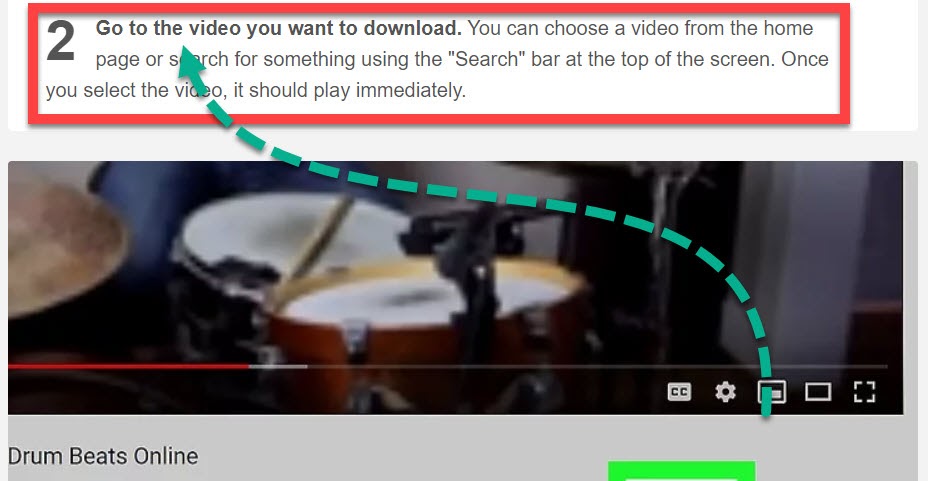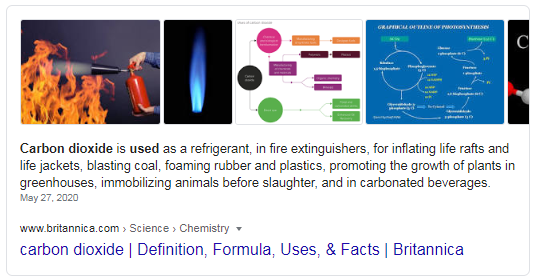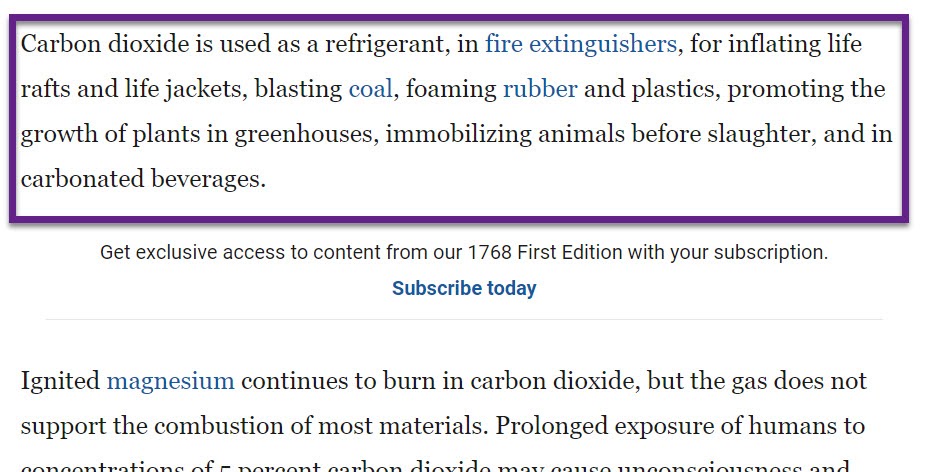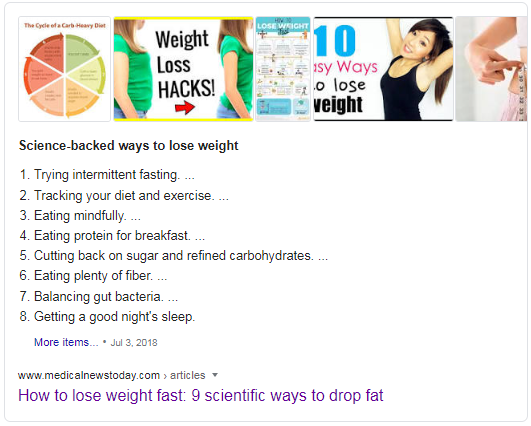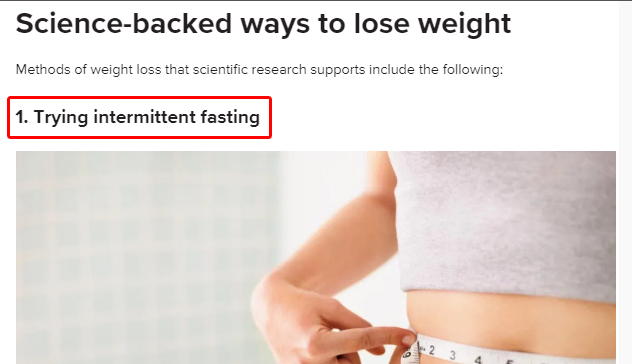Posted by
Darrell Mordecai
Back in 2019, I was trying to please a difficult client. I’m sure you know what that’s like. At some point, he threatened to fire us.
He wanted better rankings. By next week.
Let’s just say he wasn’t the most reasonable person to deal with. Nothing we said could persuade him. Since his site was ranking on page one of Google for many terms, Featured Snippets seemed like a great option that could yield results within a week. After a stressful week of running tests and experiments on my own, I was able to get some impressive looking Featured Snippets for the next meeting. Crisis averted.
Having gone through that experience, I wanted to create a deep and comprehensive guide that could help you come up with strategies for winning Featured Snippets. This is part 2 of that guide.
Since everything I’ll be sharing in part 2 is based on steps from part 1, if you’ve not yet seen the first part, I highly recommend that you go back and read it first.
A Quick Recap of Part 1 on Featured Snippet Opportunity
In the last post, we covered how to find Featured Snippet opportunities. This entails:
- Finding pages that are likely to win Featured Snippets
- How to qualify your chances of winning a given Featured Snippet
- How to get Featured Snippet wins when the current rankings are too competitive
- Assessing Featured Snippet clickability
In this post, I’ll be covering how to take your research from the previous post, and put it into action.
Before we jump in, we first need to understand user intent.
Understanding User Intent for Winning Featured Snippets
User intent refers to what the searcher is looking for when typing a query into Google. It’s where Google meets the user by presenting content. The user has a burning question and Google is attempting to answer that question. If you understand how Google is attempting to do that, you have the first step in winning a Featured Snippet.
The reason is simple.
Google’s whole point in creating Featured Snippets is to answer user intent in the Search Engine Results Page (SERP). This means understanding how Google is attempting to satisfy user intent via a Featured Snippet will give you insight into how to create Featured Snippet worthy content.
Interestingly, Google will sometimes answer an unexpected user intent (more on this later), making it easy to get it wrong which could result in many wasted hours and worse, poor results. Therefore, getting this right is the first step. Everything you do from here on out will draw on your understanding of user intent.
Ask yourself this. If you typed the search term into Google, what would you be looking for? What would the perfect answer look like? By asking yourself this, you’re putting yourself into the mindset of the Google user. Yes, you are guessing at this point. But, have no fear, I’ll show you a way to qualify whether your initial search intent estimate is correct. How?
SERP analysis.
When you do a SERP analysis you’re looking at existing Featured Snippets in the context of the overall SERP, with the goal of understanding how Google understands the searcher’s intent. This should give you some insight into what you should do to win Featured Snippet spots. From there you can build an action plan.
Let’s dive in…
SERP Analysis – Search Intent
Type your target keywords into Google and take a look at the Featured Snippet that’s currently ranking. What you see will help you to create a strategy.
Quick note, I’m only focusing on user intent at this point. I’ll be focusing on actual practical strategies in the next section.
There are many things you can discover from looking at the SERPs. Sometimes your analysis will show you the best medium to create to win a Featured Snippet.
What do I mean?
1. Intent as a Medium
Let’s say you’re trying to sell caricature courses. Ranking at the top of Google for the term ‘how to draw caricatures’ would be a great way to introduce your business to potential buyers. Before you start creating content, type the keyword into Google. This is what you’ll see.
As you can see, there’s a nice big YouTube video right at the top of the SERP. There is also a carousel of videos below the People Also Ask box. All the organic results are below the fold.
Let’s do a little psychoanalysis. What is the search intent and how is Google answering it? Most likely the user was looking for some practical content to help them learn how to draw caricatures. Now, if you think about it, drawing is a visual art. Therefore it would be difficult to satisfy user intent with written content. Video, on the other hand, is the perfect medium in this case.
This is a classic example of a ‘how-to’ query that’s answered by a video.
This means in order to win a Featured Snippet on this SERP you’d have to create video content that answers the search intent better or more thoroughly than what is currently ranking. Try to imagine the searcher. What exactly are they after?
At this point, you’ll have to use your intuition and common sense. Now, ask yourself, has the Featured Snippet hit the mark? Could you create something better that does? I’ll give you a strategy to help you do this in the next section.
The takeaway here is that search intent can tell you what medium to use. In this case, it’s video.
Now, taking this further, sometimes your SERP analysis will show you multiple media.
2. Multiple Media
Assessing intent in terms of format can be tricky. It’s really not as simple as just running a query and seeing what’s on the SERP (though doing so is incredibly helpful). Sometimes, Google can switch Featured Snippet formats. As you head to the SERP to see what Featured Snippet format Google is using it pays to know what the URLs Google has been utilizing. As I spoke about in part 1, I use our SERP Feature Monitor to track the URLs Google is using within a given Featured Snippet.
What do I mean in this context? Well, if I see a video Featured Snippet, as I did above, I use the SERP Feature Monitor to see if Google consistently uses a YouTube URL. If it doesn’t, that tells me that the search engine is not locked in on a specific media intent/format. As you can see in the screenshot below, the SERP Feature Monitor is showing two URLs showing up as Featured Snippets. One of which is a YouTube URL and the other is for allrecipes.com.
Let me show you a good example of how Google may not be as locked in a media format as you might think. When you type the term ‘how to change a tire’ into Google, you see this:
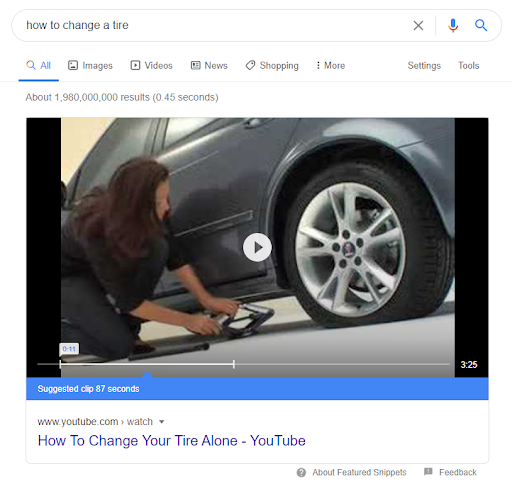
Again, let’s try to figure out the user intent. As with most ‘how-to’ queries, the user is looking for some step-by-step instructions. Here, Google is answering that request by presenting a video.
What’s interesting is, if you make the same search but spell the word ‘tire’ as ‘tyre’ (British spelling), you see a numbered list:
Since there is really no difference in meaning between tire and tyre, we can conclude that both written instructions and video content are valid ways to satisfy user intent. Therefore, to win this Featured Snippet, you could try to create either written content or video content (again, definitely use the SERP Feature Monitor to see if there is room for both video and written content inside a given Featured Snippet).
The takeaway here is, sometimes more than one medium can satisfy user intent.
Now, in both examples above, the search intent was fairly simple to understand. What is interesting is how Google sometimes throws you a curveball.
3. Assessing Unexpected User Intent for Featured Snippet Scores
Sometimes, Google will surprise you. What do I mean? If you type the term ‘hire a contractor to build a house’, what would you expect to see? Since this sounds like the searcher is looking to hire someone we’d expect to see a Local Pack. However, this is what you’ll see:
No Local Pack. Instead, Google understands this as an informational query. Google thinks users want to know how to find a good contractor. Although it goes against expectation, Google goes entirely “informational” for this query.
Just in case you think Google is making a mistake, take a look at the organic results for the same query.
All of the regular organic results are also informational. Why? Well, probably because this is a complex purchase. Google has determined that this query, as it is constructed, is executed in order to gather information whereas a query like ‘contractor to build a house near me’ would indicate a local intent with the aim of hiring a contractor.
The takeaway here is, don’t take user intent for granted. Do your research. By assuming the intent for a keyword you want to target is linear, you might be passing over a great Featured Snippet opportunity.
Which brings us to…
4. Multiple User Intents
Even if the user intent does line up with your assumptions, it’s still important to take a deeper look into user intent. For instance, if you type the search term ‘dried beans and legumes’ into Google, you’ll see this:
Here, the search intent seems easy to fathom. The user was most likely looking for a list of dried beans and legumes. Google answers this by presenting a short paragraph listing of types of dried legumes. What is interesting is, there are organic results above the fold.
What’s even more interesting is, if you look carefully at the organic results you’ll see multiple user intents on this SERP. The Featured Snippet is coming from an article literally about legumes. Under the Featured Snippet is an article from Healthline listing legumes and their nutritional content. The next two articles explain how to cook legumes.
My analysis? Google understands that there are two types of search intent for this query.
- Nutritional content searches
- How to cook type content searches
The Featured Snippet is showing up as a list of legumes. However, if you had an article explaining how to cook legumes, it’s still possible to win a Featured Snippet by satisfying the ‘how to cook’ user intent.
At this point, if you wanted to win a Featured Snippet that satisfies the ‘how to cook’ search intent, you should first qualify your chances. It’s one thing to see Google showing a second user intent in the organic results. But is Google ready to show a different user intent in the Featured Snippet spot?
The best way to do this is with the SERP Feature Monitor. This way you can see if Google is sometimes showing a URL about how to cook legumes.
As you can see in the screenshot above, Google is showing both ‘nutritional information’ and ‘how to cook’ user intents in the Featured Snippet spot.
However, it’s important to note that in this case the URL answering the ‘nutritional’ intent is the dominant URL, showing up 70% of the time. The URLs satisfying the ‘how to cook’ user intent are challenger URLs, only showing up 30% of the time (I covered this in part 1 in the ‘Assess your Chances of Winning’ section). When all is said and done, in this case, you can rank ‘how to cook’ content in the Featured Snippet, but you might not get as much traffic as you’d hope for.
Now, there’s a different type of user intent that is likely to give you more traffic than all the others.
Technical instructions.
5. Technical Instructions – The Ultimate in Featured Snippet Intents:
Sometimes what the user is searching for is technical. In such cases, Google is likely to feature step-by-step technical instructions in the Featured Snippet. For instance, if you type ‘how to update laptop to windows 10’ you might see this:
Now, as I mentioned above, winning a Featured Snippet like this is great news. The reason is when technical information is shown in a Featured Snippet, the user is likely to click through to the article so that they don’t miss anything. What’s more, often technical instructions are truncated, making the information impossible to understand without reading the article.
Let’s Take a Step Back…
Okay, what have you learned from your SERP analysis? You should have a good estimate as to what the searcher is looking for. You should also understand how Google is attempting to satisfy the searcher, which should inform you what content you should target.
Now it’s time to figure out what to actually create. Let’s look for some content writing strategies…
Creating Content For Featured Snippets
If you’ve worked through this guide up until this point, you’ve come a long way. You should have chosen a target Featured Snippet that is volatile enough that Google is likely to choose your URL instead. After some analysis, you should have a solid understanding of the user intent the Featured Snippet is answering.
It’s now time to actually create the content.
Featured Snippet Analysis – Look for Content Gaps
In order to start creating your content, first, take a look at the currently ranking URL within the Featured Snippet. In order to dramatically increase your chances of winning the Featured Snippet spot it pays to be strategic. Look at what’s currently ranking. Does the current Featured Snippet answer the searcher’s question clearly and completely or is there something missing?
If you can find Featured Snippet content that misses the mark somewhat and you create something that hits the mark, you’ll increase your chances of winning.
Here’s what to do…
Type the search term into Google and take a look at what is currently ranking. At this stage, you’re looking at the Featured Snippet in the SERP (you’ll be clicking through to the page soon).
When you look at the Featured Snippet, do you see any obvious opportunities? Is the text awkward? Did Google have to do some editing to create the answer? If so, you have an opportunity to create something that’s more simple and answers the search query more directly.
A great example of this is the term ‘can alt tags have spaces’.
The Featured Snippet is awkward. It does attempt to answer the user’s question, but the answer doesn’t make sense. The sentence starting with ‘As you can see’ seems to come out of nowhere. How does it follow what came before it?
To understand why the Featured Snippet is the way it is, click through to the actual article.
In paragraph Featured Snippets, Google often makes it easier to find the content the Featured Snippet is drawing from. When you click through to the article, Google not only scrolls down to the actual text it’s drawing from, but Google also highlights the text itself in yellow (this is not true for all Featured Snippets, but many).
As you can see, Google is doing some editing to create the text. Since the editing is done via AI, some meaning is being lost. The person who wrote the answer intends the reader to click a link to get to the answer. Google, not understanding that, edits out the link. The result is nonsensical.
This is an easy opportunity.
Another reason this is an easy Featured Snippet win, is this is not a well-constructed piece of content. It’s being drawn from a forum. Forums are often filled with hastily written content. To ‘steal’ this Featured Snippet, you can easily write a dedicated piece of content that is well structured and authoritative. Add some content designed to be featured in the Featured Snippet (more on how to structure this later) and you are likely to win.
Now, I’d be lying to you if I left you with just this example. It generally isn’t as easy as this. More often than not, you have to look a little harder to find an opening.
For example: If you look at the SERP for the term ‘how to download youtube videos’ you’ll see this:
Here, the search intent is pretty easy to understand. The user is looking for a step-by-step guide. Everything looks great. Right? Look again. This Featured Snippet doesn’t serve the user in any way. It fails to mention what platform (KeepVid) to use to download videos. Without explaining what platform to use the instructions are meaningless.
Now before moving on to how you could win this Featured Snippet, I have to point out that having a URL in a Featured Snippet like this is an ideal situation for the site owner.
Why?
This Featured Snippet is likely to get a lot of clicks. The user can see how structured the content is but needs to click through to the article to find out what platform to use to download the video.
However, since I’m trying to show you how to look for a content gap that will help you capture the Featured Snippet, I’m going to suggest creating content that includes the platform in the Featured Snippet. To do that, click through to the article.
You will notice that Google is taking the content for its numbered list from the bold headings. See screenshot below:
Did you notice something strange? Google ignores the first heading and starts with the second. Let’s surmise what the reason is…
The first header is really badly written. It includes a link where simply writing out the name YouTube would be appropriate. The link is necessary to explain how to open YouTube, but would only make sense as part of the paragraph text, not the header.
Also, I question the choice of header text altogether. YouTube is not the focus of this stage of the article. The video downloading platform KeepVid is. The paragraph text mentions opening YouTube only after opening KeepVid. Therefore it would make more sense for the first header to say ‘Go to KeepVid’.
Now, if Google wanted to use the platform as a bullet point in spite of the strange header, it could easily have taken that information from the paragraph text below the header. The problem here is the paragraph information is vague at best. There is no explanation as to how to find KeepVid or if there is an installation process.
This could very well be a content gap that you could fill. How so?
Perhaps your content could be structured the same way, having chapter headings that are designed to be the steps in a step-by-step guide. You could then include a heading that would mention ‘Go to KeepVid’. Under the heading you would write clear detailed instructions explaining how to go to KeepVid. Include a link and a little bit of explanation about the platform. The more explicit you are the better.
Another example is for the term ‘what is carbon dioxide used for’:
For this search term, we can easily understand the user intent. The user is looking for a list of uses for carbon dioxide. What’s interesting about this result is you might expect a bulleted list. Instead, Google is presenting a short paragraph.
Okay, let’s click through to the article to see where the Featured Snippet is coming from.
As you can see, the Featured Snippet is drawing from a short paragraph within the article. Now, the user is looking for a list of uses for carbon dioxide. Perhaps a good strategy here would be to convince Google to create a bulleted list. How?
Just as you saw in the previous example, a list Featured Snippet often takes text from headers. Here, perhaps you could include a section in your article that lists all the uses of carbon dioxide. State the searcher’s question in a header (H1, H2, etc.). You could then structure each item as a separate header, using a lower level header than the question header. For instance, if the question header is an H2, the answers will be listed as separate H3s. You could then write some paragraph content underneath each item, offering some explanation.
Now, before you write anything, you should first qualify if this strategy is likely to work. To do that, take a look at the top-ranking pages on this SERP. Do any of the other pages use the structure I’m proposing? If they don’t, there is a good chance this strategy will work. If on the other hand, they do have this structure, the strategy is unlikely to work, as Google is choosing a paragraph when a list is available.
While you’re looking at the top-ranking pages on the SERP, you should also look at the nature of the content on those pages. Do you see a pattern? Are the articles all long and detailed or short and concise? If you find a pattern, your page should conform to that pattern.
When I looked at the top-ranking content for this search query, I noticed that all the pages had thorough and detailed content. This means when creating that list in your article, don’t just create a list of headers. Make sure to create detailed thorough content explaining each header. Try to make it more detailed and nuanced than what is currently ranking.
The takeaway here is, look for something missing in each Featured Snippet, then build a strategy around that gap. You won’t always be able to find one. When you can’t, you can still try to get your URL into the Featured Snippet by simply creating a better piece of content than what’s currently ranking.
Implementation – How to Optimize Your Content
At this point, you should have your strategy figured out. You should understand the user’s search intent and that should help you understand what content to create. You should also have a strategy built around a content gap. With the hard work done, the fun begins.
How do you actually optimize your content to get Featured Snippets?
Unfortunately, as with any area of SEO, there is no foolproof strategy, but you will increase your chances by following these best practices.
1. Write Out the Question
Although it is not absolutely necessary to actually write the question out, it does help. This will help build relevance and signal to Google that the information you are presenting for the Featured Snippet is relevant to the search term. Also, include the question in a header, preferably a higher level header (H1 or H2).
2. Lists (and Headers) for List Featured Snippets
If you are trying to win an ordered list, once you’ve included the question in a higher level header, include your list items either in headers that are one level lower than the question header or simply create a bulleted or numbered list – (li).
To see an example of this, take a look at the Featured Snippet that’s showing for the term ‘easy way to lose weight’:
As you can see, this is a list post. If you click through to the post you’ll see that Google is drawing the list from the H3 sub-headings.
3. Paragraph Text
Paragraph text should be approximately 290 characters. In fact, in 2019, we did a study to figure out what the average Featured Snippet character count is. We discovered that on average a Featured Snippet contains 292 characters.
Your text should also answer the query as directly as possible. The better you write the answer the more likely you are to get the snippet. When answering the search term it’s recommended (but not essential) to introduce the answer with a phrase that indicates you’re writing an answer. Terms like ‘start with’ and ‘try these steps’ may increase your chances.
4. Images
It’s important to always include an image in close proximity to your answer. This is likely to influence Google to include your image in the Featured Snippet. However, there is no guarantee. In fact, in 2018, John Mueller stated that sometimes there are really useful images from one site and great snippets from another.
This means even if you get the Featured Snippet another site may have their image featured in your Featured Snippet. To avoid this here are some best practices:
- Make sure your image is in close proximity to the Featured Snippet text
- Make sure your image is of high quality
- Include a short description of the image in the alt tag
- Avoid having text embedded on the image
- Use clear short file names with words separated by a hyphen
5. Tables
When Google presents a Featured Snippet showing ordered data or comparisons, it often shows up as a table. To win a table Featured Snippet, you should include the query or a variation of it in a header (H1, H2, etc). You should then include a table directly under the header. Also, present the information in the header in the order of importance, presenting the most important information at the top of the table and the least most important information at the bottom.
6. Add Details
In a case where you try to win a Featured Snippet and Google doesn’t pick your URL, you can try to include additional information to build context around your Featured Snippet content.
You now know how to structure your content. You’re now ready for the final step.
Experimentation…
Moving the Needle – Experimentation
This section is likely the most important one. Yes, I have focused on some strategies and ways to qualify your actions. Everything I have shared is designed to help you put your best foot forward. But at the end of the day, all your strategizing is based on estimation.
My point is, consider whatever you do from here on out as an experiment. You might think you’ve found a content gap that you can fill, you write the perfect piece of Featured Snippet worthy content and Google ignores you. This happens all the time.
When this happens, try again. Your analysis might have been spot on. Try rewriting it. As long as what you are writing makes sense and flows naturally, you can try changing the order of the information. Sometimes a small edit can change everything.
When you run SEO experiments, it’s always important to be able to look over your efforts, which brings us to the next section…
Track Your Efforts
Once you’ve optimized your pages, don’t forget to track them. This is crucial in any SEO campaign. You can do this in Rank Ranger by tracking Featured Snippets on the Insight Graph. Add a note whenever you make a change to your page. See screenshot below:

Insight Graph showing a note on the timeline of the Featured Snippet Report
As you can see in the screenshot showing the Insight Graph, the green line is showing a note explaining a change made to a page. After the note, you can see a jump in the number of Featured Snippets on the site.
Now, when you track changes, it’s important to include:
- Which page you made changes to
- The keyword you are targeting
- A brief description describing the changes you’ve made
If you edited the text of your content, make a note of the new copy. By being systematic, you’ll be able to see what moved the needle and what didn’t.
And Finally… Take Action
Okay, you’ve now seen my Featured Snippet process. As I mentioned above, everything in this guide has been designed to give you practical tips and strategies for winning Featured Snippets. I’ve organized the information in a systematic way so that you can work through it from top to bottom. Where I’ve included deeper SEO points, I’ve tackled them from a practical perspective. This is my process, and I hope you gained from it. It’s now up to you to take action.

